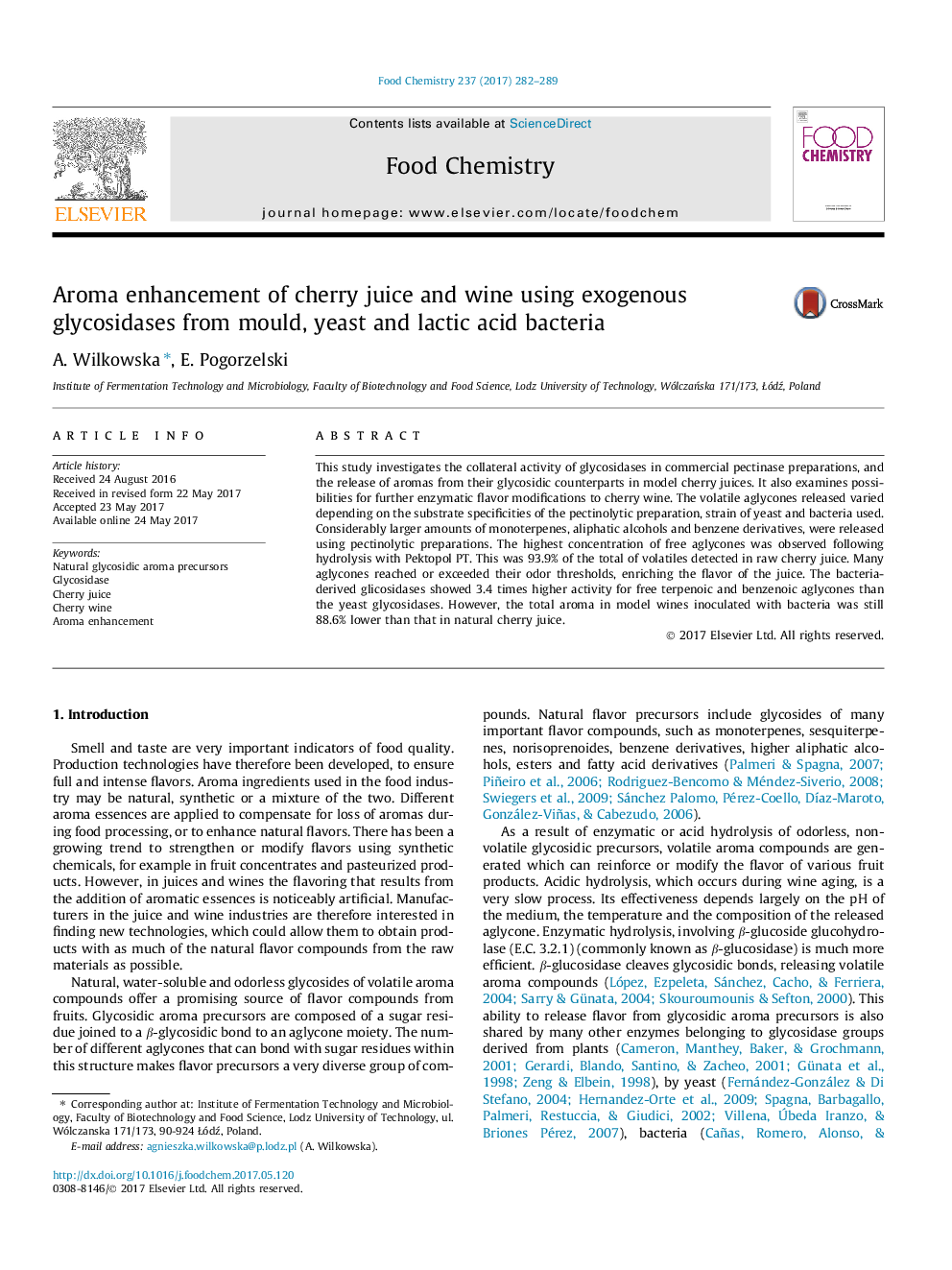| Article ID | Journal | Published Year | Pages | File Type |
|---|---|---|---|---|
| 5132724 | Food Chemistry | 2017 | 8 Pages |
â¢Exogenous glycosidases from mould, yeast and lactic acid bacteria were studied.â¢Aroma aglycones from glycosidic precursors in cherry juice and wine were released.â¢Among aglycones monoterpenes, alcohols and benzene derivatives were detected.â¢Many aglycones reached or exceeded their odor thresholds enhancing cherry aroma.â¢Newly-formed terpenes, which were not present in the raw juice were detected.
This study investigates the collateral activity of glycosidases in commercial pectinase preparations, and the release of aromas from their glycosidic counterparts in model cherry juices. It also examines possibilities for further enzymatic flavor modifications to cherry wine. The volatile aglycones released varied depending on the substrate specificities of the pectinolytic preparation, strain of yeast and bacteria used. Considerably larger amounts of monoterpenes, aliphatic alcohols and benzene derivatives, were released using pectinolytic preparations. The highest concentration of free aglycones was observed following hydrolysis with Pektopol PT. This was 93.9% of the total of volatiles detected in raw cherry juice. Many aglycones reached or exceeded their odor thresholds, enriching the flavor of the juice. The bacteria-derived glicosidases showed 3.4 times higher activity for free terpenoic and benzenoic aglycones than the yeast glycosidases. However, the total aroma in model wines inoculated with bacteria was still 88.6% lower than that in natural cherry juice.
